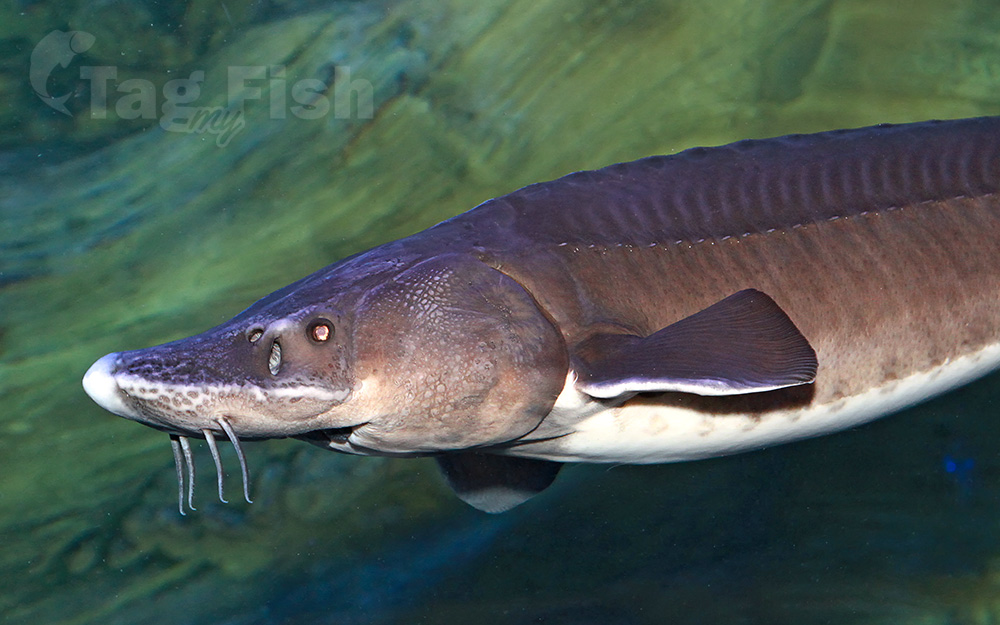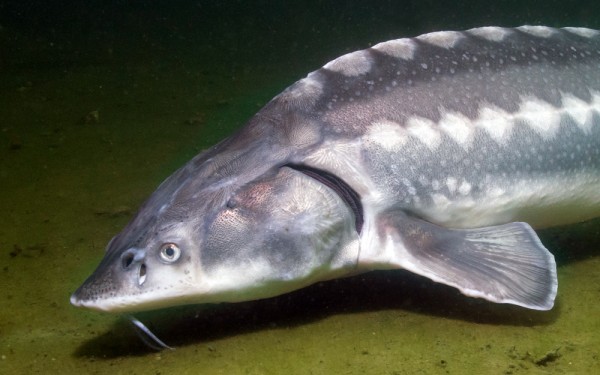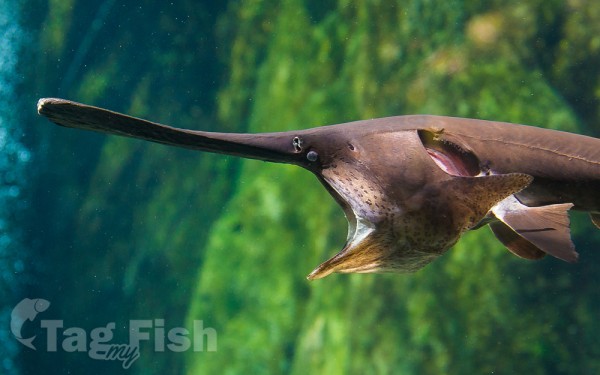Acipenseriformes - Sturgeons and Paddlefish

Classification
Description
Acipenseriformes is an order of basal ray-finned fishes that includes living sturgeons and paddlefishes (Acipenseroidei. They are the second earliest diverging group of living ray-finned fish after the bichirs. Despite being early diverging, they are highly derived, having only weakly ossified skeletons that are mostly made of cartilage, and in modern representatives highly modified skulls.
The axial skeleton of Acipenseriformes is only partially ossified, with the majority of the bones being replaced with cartilage. The notochord, usually only found in fish embryos, is unconstricted and retained throughout life. The premaxilla and maxilla bones of the skull present in other vertebrates have been lost. The infraorbital nerve is carried by a series of separate canals, rather than being within the circumorbital bones. The palatoquadrate bones of the skull possess a cartilaginous symphysis (joint), and also have a broad autopalatine plate, as well as a narrow palatoquadrate bridge, and a quadrate flange. The quadratojugal bone is three-pointed (triradiate), and the dentition on the gill-arch is confined to the upper part of the first arch and to only the first and second hypobranchials.
Members of Acipenseriformes retain the ability to sense electric fields (electroreception) using structures called ampullae. This ability was present in the last common ancestor of all living jawed fish, but was lost in the ancestor of neopterygian fish. All Acipenseriformes possessed barbels like modern sturgeon (which have four) and paddlefish (which have two).












